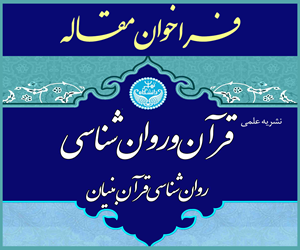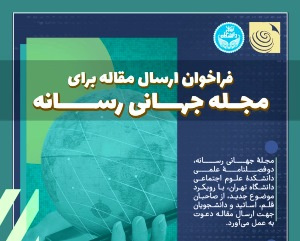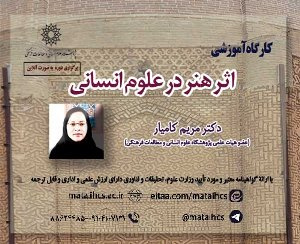مدل پارادایمی تعاملات تماشاگران ورزشی در رویدادهای ورزشی با استفاده از واقعیت مجازی و واقعیت افزوده (مقاله علمی وزارت علوم)
درجه علمی: نشریه علمی (وزارت علوم)
آرشیو
چکیده
پژوهش حاضر با هدف ارائه مدل پارادایمی تعاملات تماشاگران ورزشی در رویدادهای ورزشی با استفاده از فناوری های واقعیت مجازی و افزوده به روش کیفی با رویکرد نظریه داده بنیاد رهیافت نظام مند انجام شد. مشارکت کنندگان این پژوهش را خبرگان در حوزه فناوری و مدیریت ورزشی تشکیل می دادند که به صورت هدفمند و مبتنی بر اشباع نظری 15 نفر از آنها بکارگرفته شدند. داده ها از طریق مصاحبه های عمیق نیمه ساختاریافته جمع آوری و به شیوه کدگذاری باز، محوری و انتخابی مورد تجزیه و تحلیل قرارگرفت. جهت افزایش حساسیت نظری و تضمین قابلیت اتکاء، از روش های درگیری طولانی مدت، مشاهده پایدار، وارسی مکرر اطلاعات و کدهای حاصل با مشارکت کنندگان برای ارزیابی برداشت های محقق و مثلث سازی. همچنین، جهت اطمینان از پایایی، از فرمول درصد توافقات استفاده شد. کدهای مستخرج از مصاحبه ها مشتمل بر 58 مفهوم، 21 مقوله فرعی و 5 مقوله اصلی بود. یافته های پژوهش نشان داد در مدل پارادیم پیشنهادی شرایط علی حاکم بر پیدیه محوری یعنی؛ تعاملات تماشاگران شامل پیشرفت ها در حوزه فناوری های واقعیت مجازی و واقعیت افزوده می باشد. علاوه براین، وجود زیرساخت های فنی بعنوان شرایط زمینه ای مستخرج شد چنانچه، شرایط مداخله ای مشتمل بر محدودیت های سخت افزاری و هزینه های بالا بوده است. از اینرو، استراتژی های حاصل متمرکز بر توسعه زیربنایی سخت افزار واقعیت مجازی و واقعیت افزوده به دست آمد که پیامدها مورد انتظار آن افزایش تعاملات مطلوبتر و نزدیک به واقیعت تر با تماشاگران بود. بر این اساس، توسعه زیرساخت ها و تسهیل بهره برداری از فناوری های نوین در صنعت ورزش، جهت تسهیل تعاملات با تماشاگران بدون محدود مکانی مورد تاکید است.Paradigm model of sports audience interactions in sports events using virtual reality and augmented reality
Sporting events have long been a focal point of human entertainment and cultural expression, bringing together communities and fostering a sense of belonging among spectators. In recent years, the integration of virtual and augmented reality (VR/AR) technologies has emerged as a transformative force in reshaping the landscape of spectator-sport interactions. This research endeavors to contribute to this evolving field by proposing a comprehensive paradigm model that encapsulates the intricate dynamics of integrating VR/AR technologies into sporting events.
The research methodology employed a grounded theory approach, utilizing a purposive and theoretically-saturated sample of 15 participants who are experts in the fields of technology and sports management. Semi-structured in-depth interviews served as the primary data collection method, allowing for a nuanced exploration of the participants' perspectives. The analysis of the gathered data followed the established principles of open, axial, and selective coding. To enhance the robustness of the study, an iterative process of information and code verification was implemented, engaging participants in discussions to mitigate potential biases and ensure the accuracy of interpretations. Reliability was further ensured through the percentage agreement formula, prolonged engagement, persistent observation, member checking, and triangulation.
The analysis of the interview data yielded a rich tapestry of insights, resulting in 58 extracted concepts, 21 sub-categories, and 5 main categories. These findings form the foundation of the proposed paradigm model for spectator-sport interactions in sporting events utilizing VR/AR technologies.
The research underscores the significance of continuous technological advancements as a foundational condition. The evolution of VR/AR technologies acts as a catalyst for shaping the spectator-sport interaction paradigm, offering novel possibilities for immersive experiences. The need to amplify interactivity and enhance the overall spectator experience emerged as a central condition. VR/AR technologies serve as a medium through which live events can be transformed into immersive and engaging experiences, transcending traditional boundaries. The study recognizes the dynamic nature of VR/AR applications, emphasizing the continuous emergence and expansion of new applications. This condition highlights the adaptability and potential for innovation within the spectator-sport interaction paradigm. The existence of a robust technical infrastructure is identified as a critical condition. For the seamless integration of VR/AR technologies, the underlying technical foundation must be capable of supporting the complexities and demands of immersive spectator experiences. Accessibility of technology emerged as a key condition, emphasizing the importance of making VR/AR experiences widely available to a diverse audience. Overcoming barriers to access ensures a more inclusive and participatory spectatorship. The creation of engaging and diverse content is identified as a pivotal condition within the paradigm model. Tailoring experiences to cater to varied interests and preferences contributes to the overall richness of spectator interactions. A condition integral to the success of VR/AR integration is the widespread availability of high-speed internet and communication facilities. These infrastructural elements underpin the seamless delivery of immersive content to spectators. The cultural acceptance and integration of innovative technologies within the spectatorship culture represent a transformative condition. The willingness of the audience to embrace technological advancements influences the success of VR/AR integration. The proactive support from sports federations and organizations is highlighted as a facilitating condition. Institutional endorsement and integration of VR/AR technologies contribute to the legitimacy and sustainability of the proposed paradigm model.
Despite technological advancements, the study acknowledges existing hardware limitations that can hinder the seamless implementation of VR/AR technologies. Addressing these constraints is crucial for optimal user experiences. The high production costs associated with creating exclusive sports content for VR/AR platforms emerged as a substantial intervening condition. Balancing cost-effectiveness with content quality is a significant challenge. The variability in network and internet capabilities in different stadiums presents a notable intervening condition. Overcoming these limitations is crucial for ensuring consistent and high-quality VR/AR experiences for spectators. The study acknowledges the presence of resistance among traditional spectators toward the acceptance of new technologies. Bridging this gap requires targeted efforts to educate and engage with diverse audience segments. A shortage of qualified personnel for the implementation and support of VR/AR technologies is identified as an intervening condition. Building expertise and fostering a skilled workforce is essential for the successful execution of the proposed paradigm model.
The study advocates for continuous advancements in VR/AR hardware to address existing limitations and enhance the overall quality of immersive experiences. A strategic focus on producing high-quality and customized content is recommended to strike a balance between cost-effectiveness and delivering compelling experiences to spectators. The study underscores the importance of educational initiatives and proactive encouragement to bridge the gap between traditional and technologically savvy spectators.
The successful implementation of the proposed paradigm model is anticipated to result in heightened engagement and interaction among sports spectators, fostering a more dynamic and participatory spectatorship. Integrating VR/AR technologies is expected to elevate the overall quality of the sports event experience, offering spectator’s immersive and memorable moments beyond the constraints of traditional viewing. The paradigm model's implementation is projected to have positive economic ramifications, contributing to increased revenue generation for event organizers through enhanced spectator experiences and novel revenue streams.Ultimately, the implementation of the proposed model is envisioned to result in improved levels of spectator satisfaction, solidifying the role of VR/AR technologies as integral components of the modern sports viewing experience.
In conclusion, this research unveils a paradigm model for spectator-sport interactions in sporting events utilizing virtual and augmented reality technologies. The comprehensive analysis of conditions, intervening factors, strategies for development, and consequences of implementation provides a robust framework for understanding the complex dynamics of this transformative integration. By recognizing the multifaceted challenges and opportunities inherent in merging technology and sports spectatorship, this research contributes valuable insights to the ongoing dialogue surrounding the future of immersive sporting experiences. The findings underscore the potential for enhanced fan experiences in sporting events through the strategic utilization of augmented and virtual reality technologies and advocate for continued innovation and collaboration across the realms of technology and sports management.


